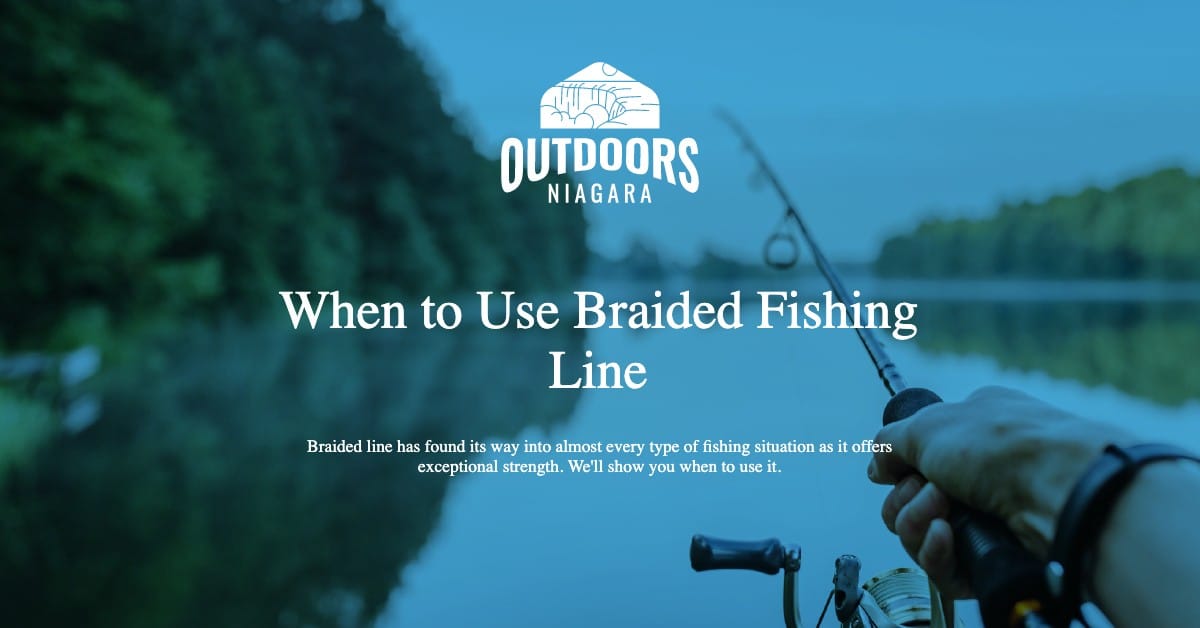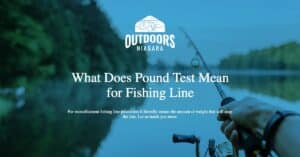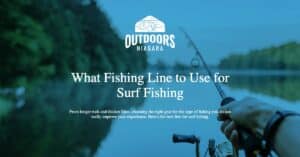Braided line has become the go-to line for most types of fishing.
It was designed for use when you fish in heavy cover because its added durability will stand up to small snags and bigger fish who are fighting from cover.
Braided line has found its way into almost every type of fishing situation.
It offers exceptional strength given its diameter – stronger than mono or fluorocarbon of the same diameter – and it does not nick when it bumps into objects.
It can fray and become weakened if not cared for or if fishing around sharper objects, such as piers.
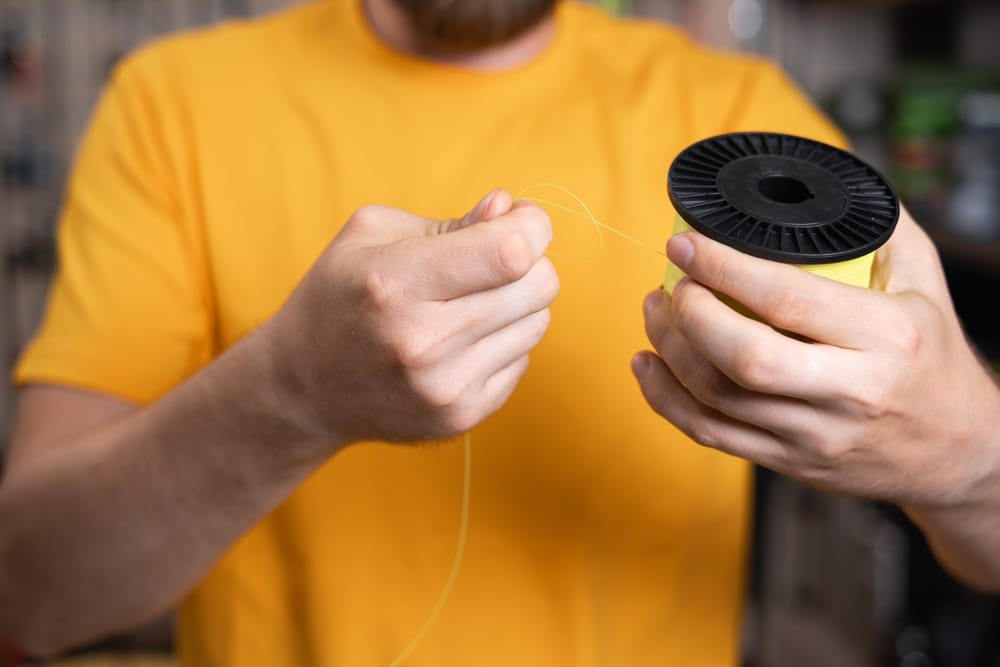
Contents
When do you use braided line?
You use it when you need a strong line or when the fishing conditions require extra strength.
Some species of fish that are a good match for the braided line include:
- Bass – smallmouth or largemouth and especially when fishing weedy beds or structures that may damage other line types. When fishing shallows or when dropping down into the 50-foot depth range. Braided line is stronger at longer distances.
- Fly-Fishing – Braided line is often the backing on fly reels. It has a lot of strength at thinner diameters making it easier to add more line to an arbor. You can pair braided lines with mono or fluorocarbon leaders to make the presentation a natural occurrence.
- Targeting Big Fish – whether you are fishing for big King Salmon in freshwater or big Cobia in saltwater, braided line has the durability to handle bigger fish. Fifty-pound Test Braided line is a good option for targeting Tarpon.
- Trout – Braided line is good for trout whether you are fishing with a spinning rod or a fly rod. Paired with a mono or fluorocarbon leader, and you are golden.
- Saltwater fishing – I’d opt for braided in most saltwater situations. You can switch to mono or fluorocarbon when fish are spooky or line shy.
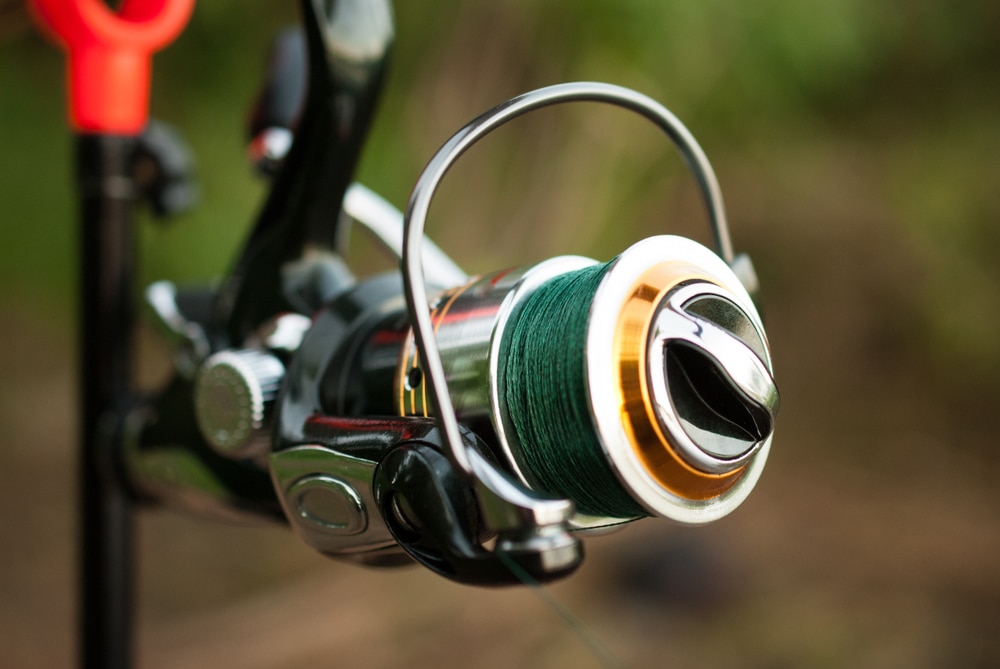
What Lures Is Braided Line Good For?
There are families of lures that work really well with braided lines.
Crankbaits are an example. You can fish braided line with shallow, deep, and lipless Crankbaits.
Jigs are another good option. Jigs such as swim jigs, umbrella jigs, and vibrating jigs are all good options with braided line.
Buzzbaits, spinnerbaits, and glides also all work with braided lines. Most of the swimbaits will also be options that work.
Anytime you are going to fish in cover or in a spot where line strength becomes a critical factor you are going to want to fish with braided line.
That means that braided line is going to be paired with lures that also can stand up to abuse from weeds, branches, sunken trees, rocks, and other structures where fish may hide.
Can You Tie a Braided Line Directly to A Lure?
You can fish with your braided line tied directly to your lure. You probably will not fish long with that set up though.
There are a couple schools of thought that come up with this question.
First is that tying the braided line directly to the lure, you remove a potential weak spot (the knot) from your fishing adventure.
At some point a knot fails everyone and while you might be great at tying knots that hold, one day that will fail.
A good knot, however, will remain secure.
The other school of thought is that when you tie the lure directly to the braided line that the hook from the lure can snag in braided line during casting or while fishing.
If you have ever used a leader and found it get tangled in the lure, then you know what this means.
So, while you can tie the lure directly to the braided line it is generally a better option to use a leader.
Can You Use Braided Line with Crankbaits
Yes, you can use braided line with Crankbaits.
In fact, there are some good reasons to consider braided line with Crankbaits.
First, you can do longer casts with braided line because it is a little heavier, especially when it is wet.
Many anglers suggest that braided line gives you more line sensitivity meaning that you can feel more of what is going on when you cannot see your lure.
That is important with Crankbaits especially for longer casts.
You want to feel the Crankbaits doing its job.
There is also the added strength of braided line over mono or fluorocarbon.
That means you can troll through heavier cover with less concern.
Can Freshwater Fish See Braided Line?
Most freshwater fish can see braided line.
The high visibility of braided line is one of its drawbacks.
To get around that, you can add a leader out of mono or fluorocarbon. Some fishing situations it does not matter.
Fishing for catfish, which have poor eyesight will not matter much if you use braided line or mono.
Braided line is more visible in clear water and can be a better option in tea-stained water, murky water, and saltwater settings where the water is not as clear.
When fishing in clear water, use a longer leader if the fish seem to notice your lure but not strike.
Does Braid Damage Rod Rings?
Braided line does not usually damage your rod, rod rings, or your reel.
There is a lot of chatter out there that braided line can abrade or damage eyes on a fishing rod.
For the most part, braided line will not damage your rod’s eyes or guides.
When damage occurs there is usually a LOT of pressure on the line especially on fast action rods.
Even stainless steel rod eyes may become damaged if there is too much pressure when you use braided line.
The problem is that braided line has a greater tinsel strength over that of over fishing lines.
It requires more strength to snap braided line over mono or fluorocarbon lines and that added pressure can damage rod eyes.
The daily use of braided line will not harm your rod, reel, or rod eyes.
What Color Braid Line Is Best
If you have shopped for braided line, you’ve notice that there is a huge selection of colors available.
How do you know what color of braided line to use? For most anglers, the color of the braid is not that important.
The reason being is most of us tie on a leader to the braided line.
The fish are not that close to the braided line.
So, unless you tie your braided line directly to your lure, the color of the line is not a big deal.
FAQ
When to Use Blue Braided Fishing Line?
Blue is a good option when you fish in crystal clear water.
White braided line can also be a good option for clear water fishing.
When to Use Yellow Braided Fishing Line?
Use yellow braided fishing line when you want to be able to spot your line in the water.
Yellow is a highly visible color (high vis) and it will likely say that on the label of yellow braided line.
Finesse fishing is a good option when you may want to see your line.
Fishing for big catfish is another time when high vis line is a good option.
Big catfish will not always strike your line and take off.
They will take your line and continue to meander around.
By watching your line you will notice that it is drifting away from the rod point to the left or right and that may be the only indication that you have a big catfish on the line.
Yellow braid is also a good option if you are fishing around low hanging trees.
How about Green Braided Lines?
Green Braided line is very hard to see in the water for anglers.
You want to choose a green braided line anytime you are fishing on lakes, and inlets.
If you are fishing inshore, in a bay, or in an inlet you probably want to opt for green braided line.

